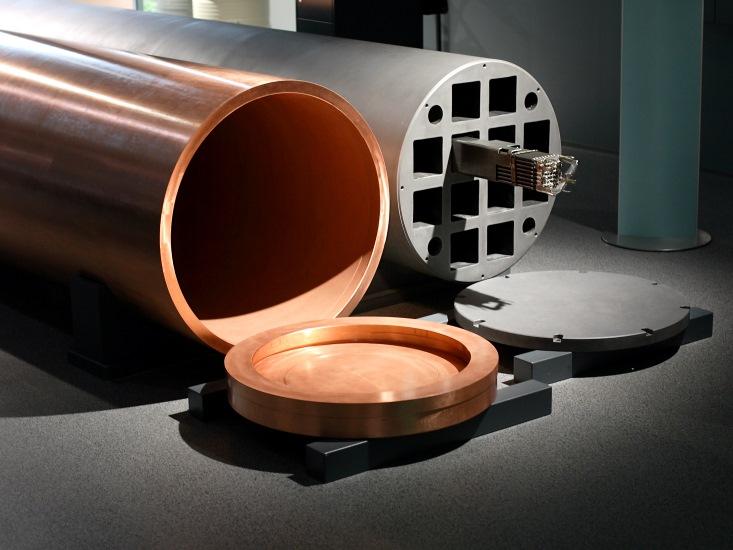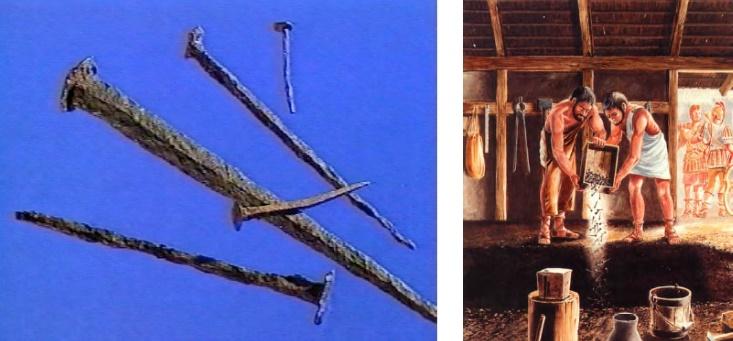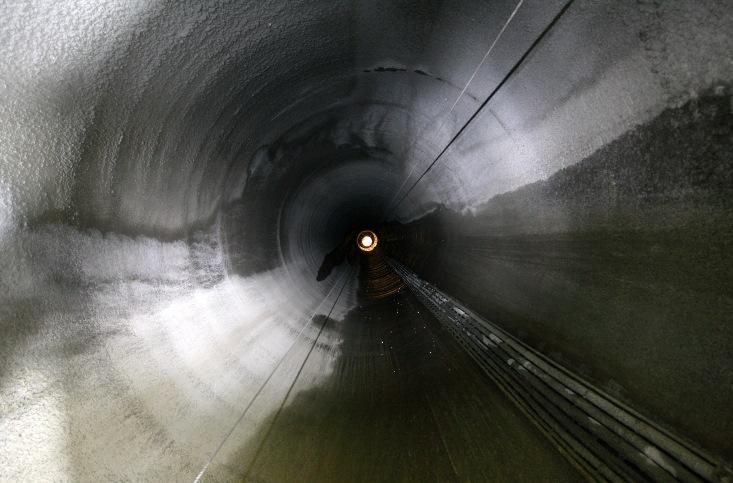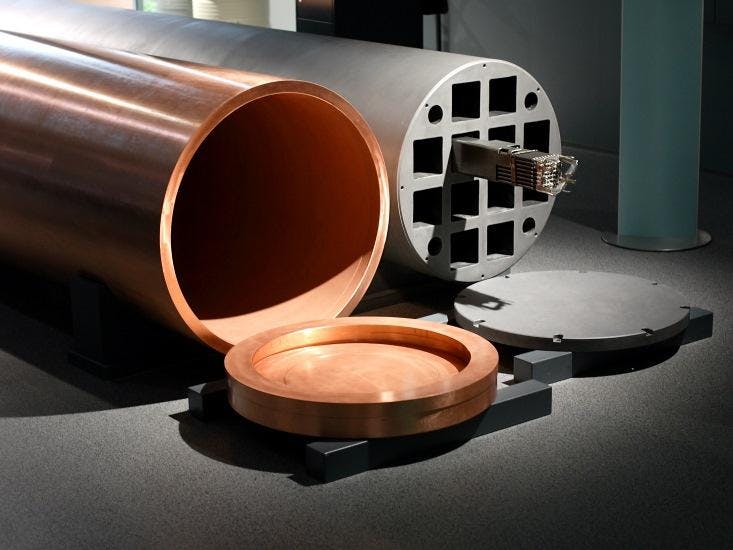
This is part 2 of Vincent Ialenti’s report on how how to think about nuclear waste in the environment over the very long term. Also see part 1, which ran on Facts So Romantic yesterday.
In the next decade, nuclear-waste experts in Finland and Sweden hope to build the world’s first-ever long-term storage repositories for spent nuclear fuel*. To keep this dangerous, high-level waste from leaking over the many thousands of years during which it will remain active, the repositories will rely on four main barriers: First, used-up nuclear fuel rods are inserted into large, cast-iron inserts. Second, the iron inserts are placed in large copper canisters (see image above), which will then be welded shut. Third, the copper canisters are placed in the repository’s underground tunnels and then surrounded by bentonite clay “buffers.” This clay will absorb groundwater, which will make it expand and then, it is hoped, snugly encase the copper canisters. Fourth, the entire bundles are to be sealed in hard granite bedrock at about 500 meters depth.
To predict what will happen to the waste in the far future, the engineers on the project became part-time archaeologists, studying artifacts that serve as analogs for the methods to be used in the repositories. Artifacts selected for these archaeological-analog studies are centuries or millennia old and drawn from around the world, such as a bronze cannon on a Swedish warship that was forgotten for almost 300 years at the bottom of the Baltic Sea. Along with the cannon, Finland’s safety case experts studied a 2,100-year-old, non-mummified cadaver found in a Chinese tomb alongside vegetables, wood, meat, and silk. They propose that looking at clay’s role in preserving the body and artifacts can provide insight into the ability of the clay buffers in the nuclear repositories to preserve their contents for the radical long term. Indeed the cadaver, the safety case notes, was “found to be well-preserved, with the skin complete and retaining some of its elasticity whilst the abdominal organs were intact and some of the joints were partially movable.” The artifacts exhibited an “equally good state of preservation, the meat and vegetables showing only partial decomposition, and this has been attributed to the thick clay layer around the coffin…providing an air-tight seal.”

As another example, Posiva’s safety case references Switzerland’s National Cooperative for the Disposal of Radioactive Waste (NAGRA)’s studies of 2,000-year-old Roman iron nails that were unearthed in Scotland. It explains how the nails saw only limited corrosion in environments that are assumed to be more corrosive than the repository’s. The nails thus helped them they gauge the amount of corrosion that the repository’s iron parts might see in coming millennia.
The bronze cannon, clay cadaver, and iron nails are recruited to help predict the far-future fates of nuclear waste repositories. Yet—as I was cautioned by both safety case experts and some of their fellow scientist or environmental-activist critics—one must not take archaeological analogs too literally. There are indeed real limits to what, say, a bronze cannon submerged in the sea for centuries can really tell us about a copper nuclear waste canister buried in granite bedrock for millennia. The differences between the repository components and the archaeological artifacts are, for some observers, simply too vast to make reasonable analogies between them.
So can such archaeological analogs really be taken as convincing evidence for the long-term safety of underground nuclear-waste repositories? The technicalities of this issue are perhaps best left to the archaeologists, materials scientists, engineers, or nuclear-waste-disposal experts among us to sort out. Yet what is clear to me is how projects like these present unique intellectual opportunities for much larger segments of society. I wonder: Can these studies help us reposition our lives within broader horizons of time?

Toward a Farsighted Ethos
Some say that Earth has entered the Anthropocene—a new geologic epoch ushered in by humanity’s own alterations of Earth’s environment. In these conditions, developing “long-termist” intuitions becomes a pressing societal task. What is needed at present, then, is something of a long-termist intellectual workout—one stretching our intellectual horizons further forward and backward across time. A more farsighted ethos, I suggest, can be cultivated by attuning to how the radical long-term enters modern planning. From this angle, archaeological analogs can inspire us to reflect more imaginatively on possible similarities and differences between distant past, far-future, and present-day worlds.
Integrating farsighted flights of analogy—of a kind inspired by archaeological analogs—into our day-to-day ponderings can refine our long-term thinking patterns. For example, when looking at an ancient artifact in a history museum, one might imagine how analogous appliances found in one’s home might be presented in a history museum thousands of years hence. Or while watching a documentary on excavations of ancient Mesopotamian settlements, one might strain to imagine what present-day Los Angeles might look like to archaeologists excavating it in the far future.
Could it be that nuclear-waste repository experts—like those I came to know in Finland—are developing fruitful resources for attuning today’s societies to deeper, planetary timescales? Could their reckonings of distant future worlds inspire positive change in our ways of living on a damaged planet?
* Correction: The wording of this sentence was changed to more accurately characterize the significance of the nuclear-waste repositories.
Vincent Ialenti is a U.S. National Science Foundation Graduate Research Fellow and a PhD Candidate in Cornell University’s department of anthropology. He holds an MSc in law, anthropology & society from the London School of Economics.



